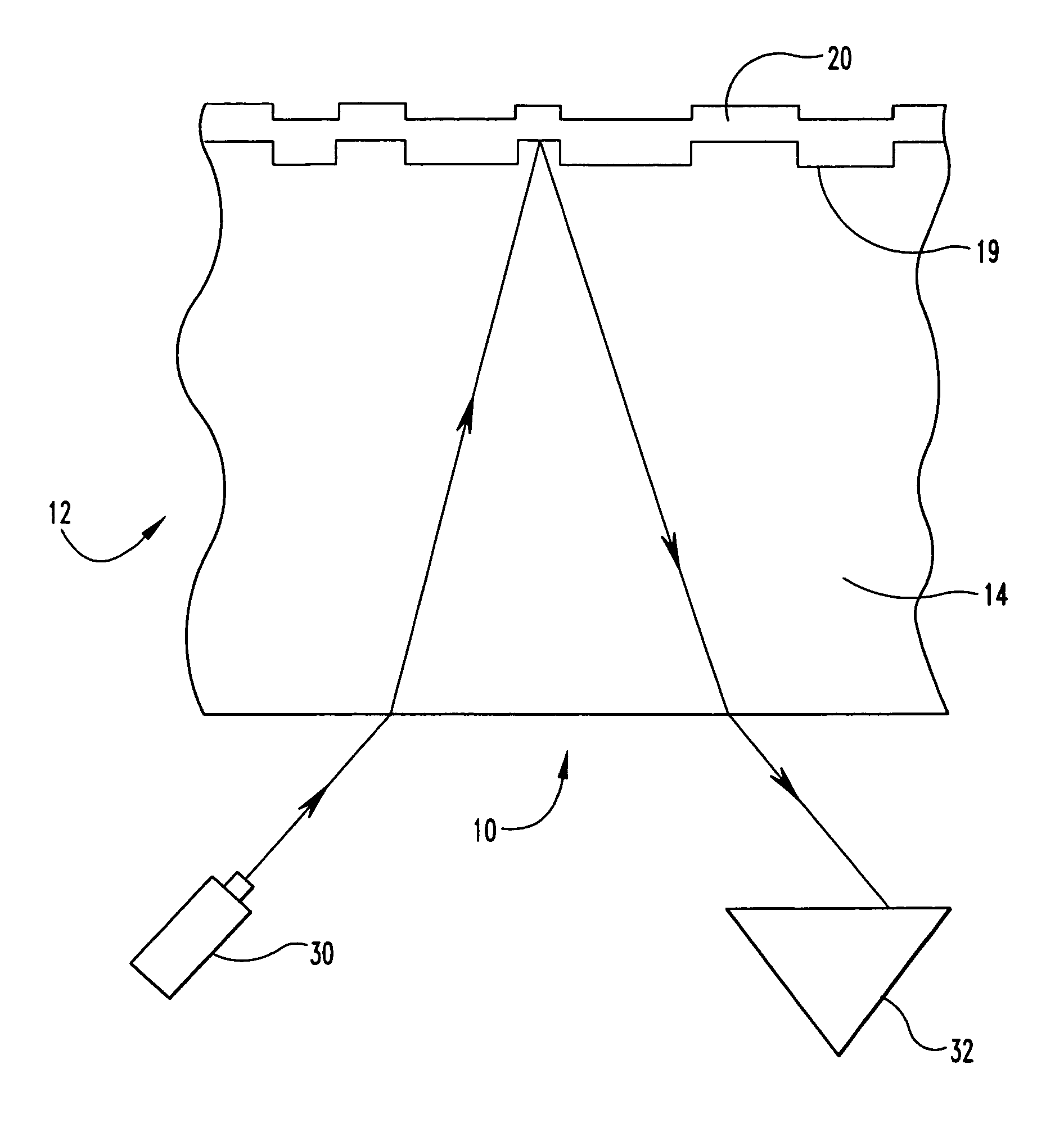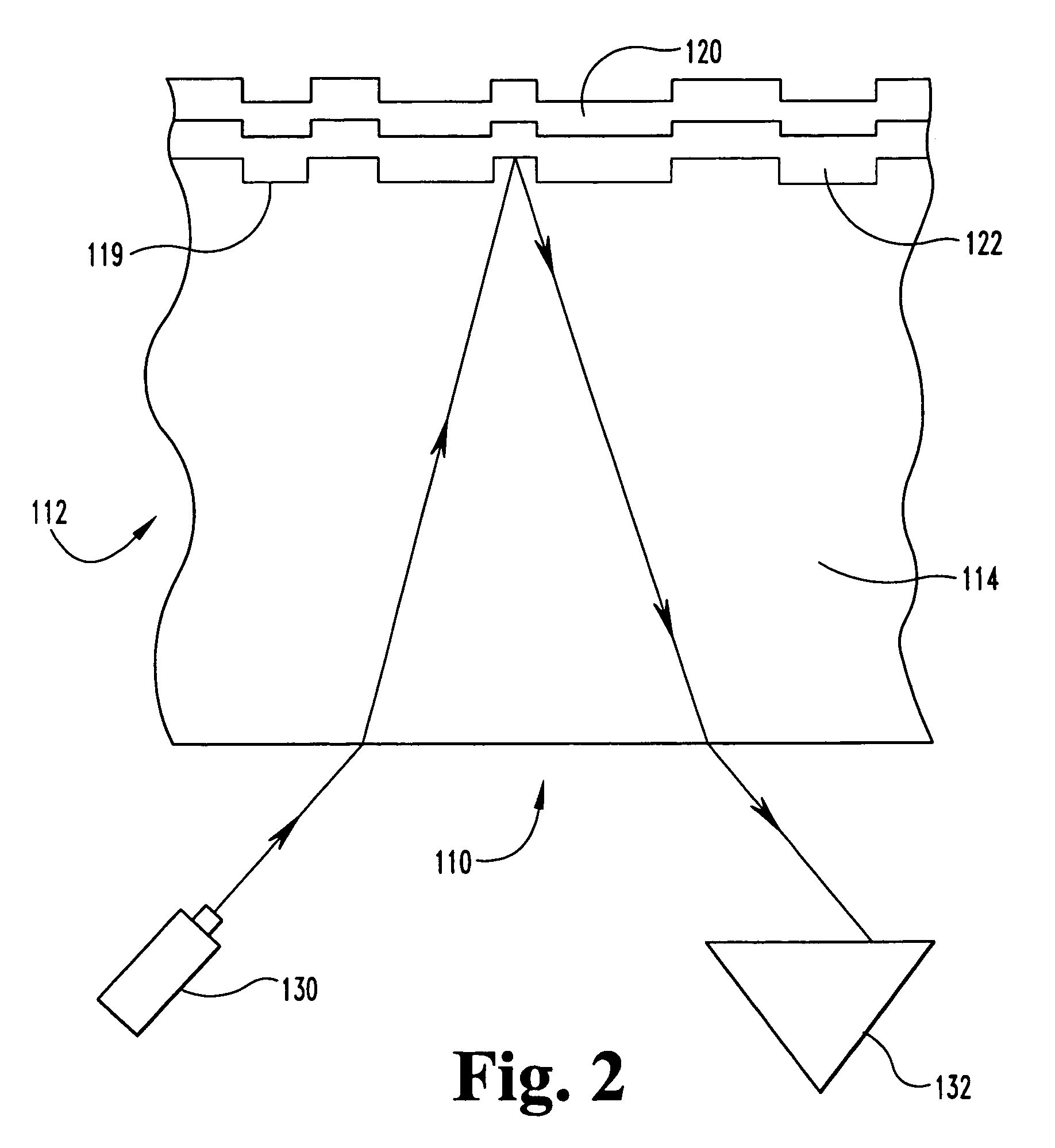Metal alloys for the reflective or the semi-reflective layer of an optical storage medium
a technology of optical storage media and reflective layer, which is applied in the direction of optical recording/reproducing/erasing methods, instruments, photomechanical equipment, etc., can solve the problems of reducing the life of the disc, so as to achieve high reflectivity and corrosion resistance, the effect of low cos
- Summary
- Abstract
- Description
- Claims
- Application Information
AI Technical Summary
Benefits of technology
Problems solved by technology
Method used
Image
Examples
example 1
[0159]An alloy composition of silver with approximately 8 to 10 atomic percent palladium will have a reflectivity of approximately 89 to 91 percent at the wavelength of 800 nanometers and a reflectivity of approximately 83 to 85 percent at the wavelength of 650 nanometers and a reflectivity of approximately 78 to 80 percent at the wavelength of 500 nanometers with the film thickness at about 50 to 100 nanometers.
example 2
[0160]A silver-rich alloy with 9.0 to 9.5 a / o percent of gold will have a reflectivity of approximately 94 to 95 percent at 650 nanometers wavelength. If a reflectivity higher than gold is desired, the gold concentration in silver can be reduced continuously to the pure silver side of the binary phase diagram without incurring any fabrication difficulty of the source material for sputtering or for thermal evaporation.
[0161]If the thickness of the thin film is reduced to the 10 to 20 nanometers range, the reflectivity will be reduced to 18 to 30 percent range applicable for DVD-9's semi-reflective layer. Adding a low concentration of an oxide former such as cadmium can further enhance the corrosion resistance of the alloy. As silver has a tendency to dissolve small amount of oxygen in the solid state which tends to lower the reflectivity of the alloy. The added cadmium will react with the oxygen to form cadmium oxide and lessen the degree of oxygen's impact to reflectivity. The desir...
example 3
[0162]A silver based alloy with about 5 a / o percent of gold and about 5 a / o percent of palladium will have a reflectivity of approximately 86 to 93 percent at the wavelength of about 650 nanometers.
PUM
| Property | Measurement | Unit |
|---|---|---|
| thick | aaaaa | aaaaa |
| distance | aaaaa | aaaaa |
| length | aaaaa | aaaaa |
Abstract
Description
Claims
Application Information
 Login to View More
Login to View More - R&D
- Intellectual Property
- Life Sciences
- Materials
- Tech Scout
- Unparalleled Data Quality
- Higher Quality Content
- 60% Fewer Hallucinations
Browse by: Latest US Patents, China's latest patents, Technical Efficacy Thesaurus, Application Domain, Technology Topic, Popular Technical Reports.
© 2025 PatSnap. All rights reserved.Legal|Privacy policy|Modern Slavery Act Transparency Statement|Sitemap|About US| Contact US: help@patsnap.com



